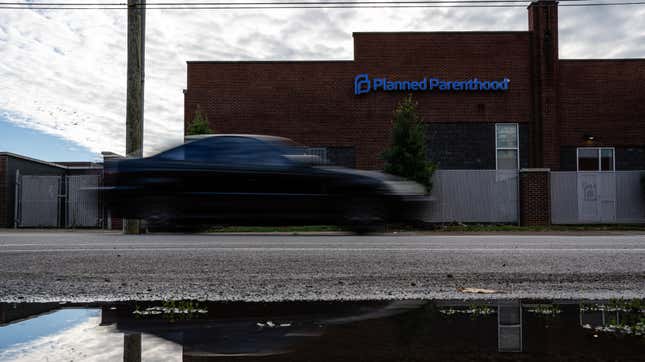
To the surprise of no one, people who come from congressional districts with lower incomes and more diverse populations are being forced to drive longer distances to get safe abortions. This realization is one of the early indicators that a post-Roe America is not a safe one for people who need abortions.
It isn’t just the sheer distance that is an issue, according to a Center for American Progress study reported by Axios. These extended trips are also leading to lost wages, higher gas costs, hotels and child care since a majority of abortion patients are already parents. The costs associated with these trips are sort of like “another ban” according to Stacy Lee, a Johns Hopkins business professor of ethics and health law.
“Women deserve access to care, and it shouldn’t be on a basis of their income,” Sara Estep, associate director of the Women’s Initiative at CAP, who conducted the district-level analysis of data through September, told Axios.
Here’s how abortion bans are playing out across the country as folks travel across state lines to get procedures done, according to Axios:
Out-of-state travel for abortion surged after Roe was overturned and states implemented their own bans or protections.
States bordering those with strict abortion limits saw big increases, such as Illinois and Florida.
More recently, states in the U.S. southwest and southeast considered safer havens for abortion implemented some of the nation’s strictest bans.
Florida’s State Supreme Court earlier this month cleared the way for a 6-week ban to take effect May 1. In Arizona, the state’s high court upheld a near-total abortion ban. The states are some of at least a dozen that will or are seeking to have abortion questions on their November ballot.
People seeking an abortion in those states are expected to travel even further. In Florida’s case, that could look like driving to North Carolina or Virginia.
The study from CAP suggests that folks who are more likely to travel at least eight hours round trip for access to an abortion make about $4,000 less per year than those who drive shorter times.
Income is not the only divider, though. Congressional districts with a higher percentage of Black people have to travel 30 minutes longer one way than districts with more white people. Districts with a higher Hispanic population had to drive an average of one hour longer than districts with a lower percentage.

All that being said, income and population are not the only difference makers. Who represents you is a huge factor. In districts with Republican representatives, people have to drive twice as long for an abortion as people with Democratic representatives, according to Axios.
The outlet says that driving distance has become a huge part of whether or not someone chooses to become a mother.
They might consider: “If I can’t drive 100 miles, if I can’t afford a bus ticket or a train ticket, then I am essentially forced to have this child.”
Lower-income workers are also less likely to have paid sick leave through employers.
“One of the biggest drivers in helping women to increase their financial independence, to access or increase their career advantages, is the ability to control when you become a mother,” Lee said.
To make matters even more complicated, providers in some states require patients to visit a clinic more than once before receiving an abortion, according to Axios.
We’ve previously reported on the plight of women as a whole need to get abortions across state lines. Back in 2022, we reported that states would try to implement interstate travel bans that would stop people from seeking out-of-state abortions, and this was right after Roe was overturned. We also reported on how California cops have decided to be bastards by sending license plate data of people seeking abortions to anti-choice states. If you were wondering, that’s against the law.